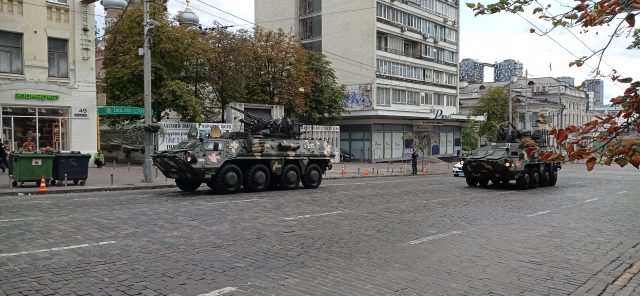Potential implications and threats of Jihadist terrorism in the Russia-Ukraine War

Geopolitical Report ISSN 2785-2598 Volume 16 Issue 6
Author: Daniele Garofalo
The war between Russia and Ukraine, which has just begun, could also have implications in the sphere of the operations and propaganda of the Salafist-jihadist organisations.
The first interesting aspect is certainly that tied to propaganda. Over the years, the media of the Jihadist organisations have often placed Russia at the centre of their propaganda, both for the oppression of the Muslim component in Chechnya and, more generally, in the Northern Caucasus, and for the role actively played by Russia in the Middle East, particularly, in Syria.
Jihadist organisations are capable and ready to often exploit geopolitical events in an instrumental way for their propaganda, even if they do not involve them directly. Jihadist propaganda would exploit the war instrumentally to confirm, as they have already done, that Russia is an oppressor.
The propaganda of al-Qa’ida (AQ) for several years has focused on severe criticism of Russia, as has that of the Islamic State, starting especially in 2015 with the Russian intervention in Syria and continuing today, especially by groups linked to the Islamic State (IS) in the AfPak area and the Indian Subcontinent. There is no shortage of accusations within the propaganda of the numerous small jihadist groups operating on Syrian territory (mostly with a Chechen, Uzbek, or Tajik majority).
The most recent video is by the leader of AQ, Ayman al-Zawahiri, dated November 23th, 2021, entitled: ‘A counsel for the united Ummah concerning the reality of the United Nations, by Shaykh Dr. Ayman al Zawahiri’, which makes several passages in which he openly condemns Russia’s role about Chechen, Caucasian, and Central Asian Muslims.

The Islamic State has often targeted Russia in the media, with the Russian-language magazine “Istok” (published in 4 issues until 2016), with several Russian-language videos of al-Hayat Media Center, with the pro-IS magazine “Hidaya” (published so far two issues mainly in Syrian territory).

Recently, it is mainly the propaganda of the Wilayat Khurasan (especially with the material in the Uzbek and Tajik languages), Pakistan, and Hind that have criticised and threatened Russia with their magazines and media material, especially for their diplomatic role about the Taliban and their operations in the Middle East.
Terrorist threat in North Caucasus and Central Asia
A second aspect relates to the operational side of the jihadist organisations, regarding the Northern Caucasus (Chechnya in particular) and Central Asia. AQ and IS in the mentioned areas are weak and are mainly composed of sleeper cells or groups that are not very operative. Still, if the war in Ukraine should prolong, they could decide to strike by exploiting the Russian military commitment on the Ukrainian front. Caucasian jihadist groups, for example, could take advantage of the Russian distraction in Ukraine and the sending of troops, armoured vehicles, and motorised regiments to the Ukrainian front by the Chechen leader Kadyrov to raise their heads, reorganise and strike. Thousands of fighters from Russia (mainly North Caucasus) and former Soviet Union countries have joined jihadist organisations in the last ten years. It is estimated that five thousand men have left Chechnya and Dagestan alone, from Central Asia (especially Kazakhstan, Kyrgyzstan, Tajikistan, and Uzbekistan) about 6 thousand men, of whom 1900 are expected to be in Syria by August 2021. All these fighters are veterans, battle-trained and strongly ideologised, with strong ties and embedded in international and regional networks of connections with other fighters.
The areas mentioned are also not new to the jihadist experience. From 2007 to 2016, the Caucasus Emirate fought against Russia under the al-Qaeda banner. Since mid-2015, most of the leaders and militants have moved under the banner of the Islamic State caliphate, joining in June 2015 the new Wilayah Kavkaz – Caucasus Province (IQS), first under the leadership of former Emirate leader Rustam Asilderov and then since 2016 under the leadership of Aslan Avgazarovich Byutukayev, who was killed in January 2021. ISQ’s organisation to date is based on dozens of small, interconnected sleeper cells directed from the IS’s far-flung provinces office and central leadership.
Also worth mentioning is the Katibat al-Tawhid wal Jihad (also known as Katibat Imam Shamil), operating since April 2016, mainly in the Northern Caucasus, under the AQ banner, composed of Chechens and Uzbeks (leader appears to be Abu Saleh al- Uzbeki) and allied with the Turkestan Islamic Party (TIP) and Hurras al-Din (HaD). Other jihadist groups with Chechen, Caucasian, Uzbek and Tajik majorities are operative in Syria, such as Junud al-Sham, of the famous leader Abu Walid Muslim al-Shishani (targeted by Hayat Tahrir al-Sham), the Katibat Khattab al-Shishani (which has hit Russian convoys in Syria and may be linked to IS) and about which very little is known, the Uzbek jihadist group of Tavhid vo-Jihad, which now operates under the HTS banner and the Malhama Tactical group of contractors. The latter is composed exclusively of Uzbeks and Caucasians, ex-military members of the Russian special forces, are fluent in local Middle Eastern languages and Russian, offer military training and consultancy courses in the presence and online, simulate battles, armed clashes, special operations (including urban combat, ambushes and first aid) in the presence and online, produce (and teach to produce) military equipment and material (improvised construction of grenades, explosives, IEDs, VBIEDs, etc). They also offer elite corps service for conducting special operations for jihadist groups, they also deal with the supply of weapons and military equipment. They are present on all social media, messaging apps, YouTube (over 200,000 views) and are operating mainly in Syria.

Conclusion
All the jihadist groups just mentioned openly want to fight Russia and have trained or become veterans in the Syrian war and other theatres and could also exploit the war between Russia and Ukraine to reignite the jihadist conflict against Russia. In the short to medium term, neither AQ nor IS, let alone the small Chechen, Caucasian, Uzbek, and Tajik jihadist groups, have the strength and capabilities to strike Russia in the various areas mentioned prolongation of the war in Ukraine could give them an opportunity.
Finally, a concern/concern: there are about one million Muslim Tatars in Ukraine (in pro-Russian areas and Crimea). As the conflict worsens, they could be subject to recruitment and radicalisation by jihadist organisations and exploited to target Russian targets in Ukraine itself.
Disclaimer. The views and opinions expressed in this article are those of the author(s) and do not necessarily reflect the official policy or position of SpecialEurasia. Assumptions made within the analysis are not reflective of the position of SpecialEurasia.
